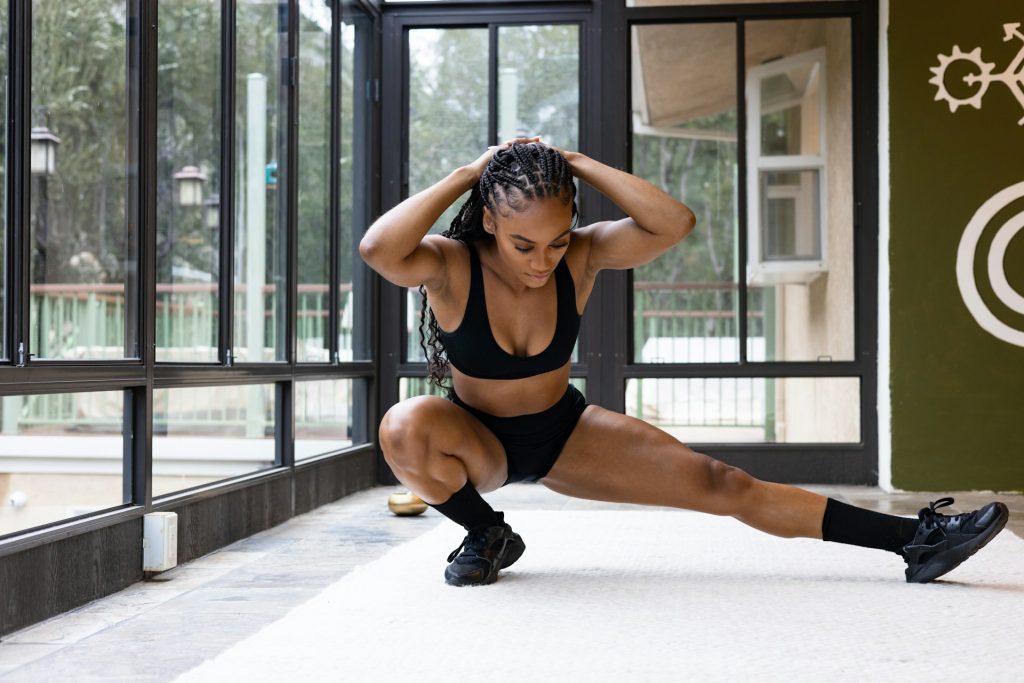Understanding the impact of static vs dynamic stretching on warm-up efficiency is crucial for athletes and fitness enthusiasts alike. Static stretching, which involves holding a muscle or group of muscles for 15 to 60 seconds, targets the release of tension and is often recommended during cooldowns. In contrast, dynamic stretching, which involves moving a muscle past its range of motion for about 10 to 12 repetitions, serves as an active warm-up, preparing the nervous system, boosting blood flow, and enhancing power and strength.
Recent insights from human kinetics and the journal of sports medicine indicate that dynamic stretching has been shown to be particularly effective at increasing muscle strength and heart rate when performed before a workout. A dynamic stretching routine prior to exercise can significantly improve performance, whereas static stretching is better suited for post-exercise to help with muscle recovery and flexibility.
Decoding the Stretching Dilemma
Static stretching involves moving a joint to its end-range of motion and maintaining that position for a period, typically between 60 to 90 seconds. This method has fallen out of favor as a warm-up routine due to potential detrimental effects, such as a decrease in maximal strength and performance. Nevertheless, static stretching maintains its relevance in physical therapy and as a relaxation technique to be applied after exercise.
In contrast to static stretching, dynamic stretching incorporates active movements that prepare the body for physical activity. The growing popularity of dynamic stretches before a workout speaks to their efficacy in rehearsing movement patterns, improving blood flow circulation, and priming muscles for exertion. This active approach is increasingly recommended over static stretching for a warm-up routine, as it can lead to better power output and a decreased risk of injury.
The Fundamentals of Static Stretching
Static stretching involves a deliberate hold at the end-range of motion for tight muscles, typically for 15 to 30 seconds. This method is integral to physical therapy and is aimed at improving flexibility by elongating the muscle fibers. The practice of holding a stretch for an extended period allows the nervous system to adapt and reduce the natural resistance within the muscle, promoting a longer-term increase in range of motion.
The Mechanics of Dynamic Stretching
Dynamic stretching operates on the principles of human kinetics, involving active movements that mimic the exercise or sport to come. It is designed to elevate heart rate, increase muscle temperature, and prepare the body for the demands of subsequent activity. By actively moving the muscles through their range of motion, dynamic stretching also helps in boosting blood flow and readying the nervous system for the coordination required in sports performance.
Key Distinctions Between Static and Dynamic Stretching
The debate between static vs dynamic stretching hinges on their respective applications and benefits. Static stretching, often synonymous with passive stretching, is best suited for post-exercise, with a focus on holding stretches to increase flexibility. Dynamic stretching, or active stretching, is more about actively moving the muscles to prepare them for the demands of activity, enhancing muscle temperature, reducing resistance, and increasing flexibility. This form of stretching is particularly beneficial for athletes, as it has been linked to improved sprint times in runners and decreased agility in soccer players.

When to Utilize Each Stretching Method
Identifying the strategic moments for each stretching method is key to maximizing workout effectiveness. Static stretching is optimal when the muscles are already warm, making it ideal for post-workout or during recovery days. It allows the joints and muscles to relax and can help in reaching goals such as being able to touch your toes over time.
Dynamic stretching, on the other hand, is best employed during the active warm-up phase. Stretching mimics the activities to come, preparing the body for physical exertion. By focusing on muscle groups relevant to the exercise at hand, dynamic stretches ensure the body is ready for the workout, reducing the likelihood of injury and improving overall performance.
Optimal Timing for Static Stretching
Static stretching is most beneficial when performed at a time when the muscles are warm and pliable. This is typically after a workout or as part of a cool-down routine, where the goal is to release tension within the muscles and improve long-term flexibility. Holding static stretches for an extended period allows for deeper relaxation and can be an integral part of injury prevention and recovery strategies.
Strategic Moments for Dynamic Stretching
Dynamic stretching is strategically most effective when used as a precursor to intense physical activity. This form of stretching mimics the movements of the upcoming exercise, effectively warming up the body and preparing the muscle groups for the exertion ahead. An extended period of dynamic stretches before a workout helps to ensure the body is agile and responsive, which can enhance athletic performance and safety during exercise.
Demonstrating Stretching Techniques
Classic Examples of Static Stretches
Time-honored static stretches include the hamstring stretch, where one maintains legs straight while bending forward, and the triceps stretch, where the arm is gently pulled across the body. These stretches are staples in cool-down routines and are effective in promoting flexibility and aiding recovery.
Hamstring Stretch
The hamstring stretch is a foundational static exercise where individuals keep their legs straight and lean forward to touch their toes, holding the position to elongate the back of the thighs. This stretch can be performed standing or seated and is a staple in flexibility routines, aiming to alleviate tightness in the posterior chain.
Triceps Stretch
In the triceps stretch, one arm is extended overhead and then bent at the elbow, with the opposite hand gently pushing the elbow to deepen the stretch. This static hold targets the muscles at the back of the upper arm and is a common cool-down exercise to release tension after upper body workouts.
Effective Dynamic Stretch Routines
Dynamic stretch routines encompass a variety of movements such as leg swings, arm circles, and hip circles. These examples of dynamic stretches are integral to an active warm-up, engaging different muscle groups in preparation for exercise and ensuring a full range of motion is achieved.
Leg Swings
Leg swings serve as an effective dynamic stretch that targets the hips, hamstrings, and quadriceps. Swinging the leg forward and backward, or side to side, prepares the lower body for activities such as running or jumping, promoting flexibility and reducing the risk of strain.
Arm Circles
Arm circles are a versatile dynamic stretch that involves rotating the arms in large circles, which helps to warm up the shoulders and upper back. This movement is beneficial before any exercise that requires upper body engagement, such as swimming or weightlifting, and aids in reducing the potential for shoulder-related injuries.

Integrating Stretching Into Your Routine
Balancing Static and Dynamic Stretches for Performance
For optimal performance, a balance between static and dynamic stretches is key. Incorporate dynamic stretches such as fire hydrants and leg swings into your pre-workout routine to enhance hip mobility and activate the glutes. Post-workout, focus on static stretches that target areas of tightness, using the breath to facilitate deeper stretching and relaxation. The butterfly stretch, for instance, can help improve lower body recovery by targeting the hip flexors and enhancing motion and flexibility.
Personalizing Your Stretching Sequence
Personalizing your stretching sequence ensures that it aligns with your body’s unique requirements and the specific demands of your workout regimen. Recognize the difference between a beneficial stretch and one that may cause discomfort. Integrate stretches that target tight or overused muscles, and adjust the intensity and duration based on personal comfort and flexibility goals. A personalized approach to stretching can enhance overall performance and reduce the risk of injury.
Flexibility for the Future: A Conclusive Synopsis
As we explore the path to achieving and maintaining flexibility, it’s clear that both static and dynamic stretching have pivotal roles. Static stretching, which involves holding a stretch for a period, has been linked to improved flexibility outcomes. Its ability to reduce tension in the muscle fibers makes it a key component for those seeking to enhance their sit and reach scores, as well as overall range of motion. This method is particularly beneficial post-exercise, when muscles are warm and more pliable.
Dynamic stretching, on the other hand, is characterized by its active movements that prepare the body for the demands of physical activity. While it may not significantly increase flexibility, it is crucial for warming up the muscles and reducing the greater risk of injury. Dynamic stretching aims to mimic the motions of the exercise or sport to come, promoting blood flow and preparing the nervous system for peak performance.
In conclusion, the integration of both static and dynamic stretches into one’s routine can lead to a more comprehensive flexibility regimen. By understanding when and how to apply each method, individuals can create a personalized approach to stretching that supports their athletic endeavors, enhances their physical capabilities, and minimizes the risk of injury. The future of flexibility training is a balanced, informed blend of both stretching styles.
